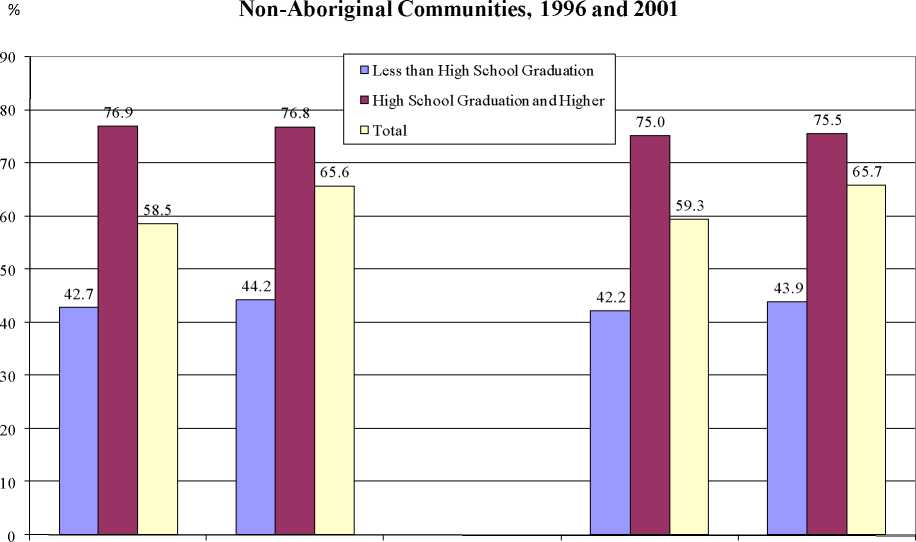47
off reserve appears to be an important determinant of income for Aboriginal populations in
Canada.
D. Labour Force Participation of Aboriginal Canadians
i. Situation in 2001
Participation in the labour force is lower among Aboriginal Canadians than non-
Aboriginal Canadians. In 2001, the aggregate participation rate was 61.4 per cent for Aboriginal
Canadians, compared to 66.6 per cent for non-Aboriginal Canadians, a gap of 5.2 percentage
points. In general, participation was higher in groups with higher educational attainment, for
Aboriginals as well as for non-Aboriginals. In fact, more than all of the participation rates
difference can be explained by the difference in educational attainment between the two groups.
If in 2001 the educational profile of Aboriginal Canadians was that of non-Aboriginal Canadians
in the same year, their participation rate would be 67.7 per cent, higher than the 66.6 per cent of
non-Aboriginal Canadians (Appendix Table 53).15
Chart 12: Participation Rate by Educational Attainment for Aboriginal and

Aboriginal Non-Aboriginal Aboriginal Non-Aboriginal
1996 2001
Source: Census 1996 and 2001
15 This is also in part explained by the different age structure of the two groups. Younger workers tend to participate
more than older workers. Consequently, it is no surprise that Aboriginal Canadians, which are significantly younger
on average, have a larger participation rate at the same level of educational attainment. This is not true for the
employment rate, however, because the rate is significantly affected by other factors mentioned in footnote #4.
More intriguing information
1. The name is absent2. The name is absent
3. Intertemporal Risk Management Decisions of Farmers under Preference, Market, and Policy Dynamics
4. Informal Labour and Credit Markets: A Survey.
5. Restructuring of industrial economies in countries in transition: Experience of Ukraine
6. QUEST II. A Multi-Country Business Cycle and Growth Model
7. The name is absent
8. References
9. Towards a framework for critical citizenship education
10. How Low Business Tax Rates Attract Multinational Headquarters: Municipality-Level Evidence from Germany